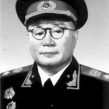
Chinese Military Creates Strategic Planning Department
Publication: China Brief Volume: 11 Issue: 22
By:

On November 22, Chinese President Hu Jintao and the Central Military Commission (CMC) issued a directive creating a “Strategic Planning Department” (zhanlüe guihua bu). The new department will fall under the People’s Liberation Army (PLA) General Staff Department as the twelfth such unit (Xinhua, November 22; Beijing Evening News, November 23). CMC Vice Chairman Guo Boxiong stated the new department would improve the quality and effectiveness of the PLA’s strategic management (Xinhua, November 24; Caixin, November 23; PLA Daily, November 23). Indeed, the department marks a departure from the PLA’s previously uncoordinated or personalized efforts at strategic assessment, and it is not clear that those other efforts linked planning to military reforms (Lianhe Zaobao, November 25).
The main responsibility of the Strategic Planning Department is planning the future of “army construction” (jundui jianshe) development. Additional responsibilities include researching major strategic issues, drawing up development plans and reform programs and raising recommendations for resource allocation to deal with cross-cutting issues for PLA headquarters and the CMC. The department also would have the authority to investigate and assess army construction efforts, suggesting it would provide a bridge between PLA strategic thinking and doctrinal innovation or weapon systems development (Ta Kung Pao, November 24; PLA Daily, November 23; Xinhua, November 22). Shanghai-based military expert, Ni Lexiong, speculated the new department’s responsibilities could go well beyond military affairs to include cultural, diplomatic, economic, energy security and trade issues related to national security (South China Morning Post, November 24).
PLA spokesmen downplayed the significance of this development, calling it a normal development to deal with the challenges of the times. Chinese international affairs commentators generally concurred. Li Jie, a researcher with the Naval Military Studies Research Institute, said the new department complemented the functions of the Operations Department—also known as the GSD First Department—and helped integrate individual strategic planning efforts spread across the PLA’s disparate elements (Sohu.com, November 27).
In a widely-reprinted, Chinese-language Hong Kong press article, however, state-run Chinese media drew attention to the department as helping the PLA develop the “self-confidence” to act on the world stage commensurate with China’s rise (Xinhua, November 24; South China Morning Post, November 24). Taiwanese media guessed the department would focus on the PLA’s planning and assessment needs related to the South China Sea and Taiwan Strait—a view contradicted by Chinese talking heads who pointed out this was not the first or the only such department in China or worldwide (Global Times, November 26). While the views of such pundits may be suspect, they do suggest the new department will be focused on broader strategic issues than the PLA’s immediate interests in Taiwan and should assist senior PLA leaders with shaping a future global role for the Chinese military.
Military commentator Major General Luo Yuan noted China’s national security and “army construction” faced many new challenges and situations, including the ongoing revolution in military affairs and an increasingly complex security environment. These challenges require high-level coordination between PLA and government elements, among the PLA services, and with the CMC to ensure forward-looking policy. Luo stated he believed the formation of the Strategic Planning Department signified the PLA already had a clear strategy and the new department would serve an auditing function, helping to keep PLA development focused on the military’s goals (People’s Net, November 22).
Regardless how this development is read, the creation of the Strategic Planning Department shows senior PLA leaders are acting upon military assessments of the increasing complexity of military affairs (PLA Daily, August 4; “The Pentagon-PLA Disconnect: China’s Self Assessments of its Military Capabilities,” China Brief, July 3, 2008). The real question is whether the PLA can break through the challenge of linking strategic thinking with implementation—a challenge that has bedeviled strategic planners in most modern militaries. The best indicator for how well the department is prepared for this challenge probably will be its staffing. To connect weapons development, the non-material aspects of army construction, planning and trends in military affairs, the department will need a diverse mix of personnel from across the PLA that includes both thinkers and do-ers as well as a well-respected leader able to reach the Chief of the General Staff and the CMC.





